raEditors’ Note: This article first appeared in The Loop Magazine Issue 16. You can find out more about Brianna Wu from her Web site, read more articles on Medium and follow her on Twitter.
The scruffy twenty-something, wandered by our Pax East booth, looking up at the banner for our game. Ten feet tall, rising above the Pax floor, three tall, skinny women look jauntily at the camera. Two wear form-fitting combat suits. Another wears a ’60s Checkerboard dress.
“It’s pretty clear what audience you’re going for,” he sneered at Maria, my lead engineer.
She looked at him, puzzled for a beat, figuring out he meant he found the characters sexy.
“Oh. Well, actually, the dev team is entirely made of women,” she responded. “These are our character designs.”
“Yeah. OK. Whatever,” he said, smirking to himself and wandering off.
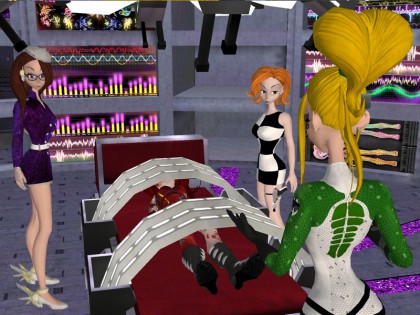
Screenshot from Revolution 60
It’s not a reaction I always get, but it happens often enough that I’m not surprised by it any more. I never set out to design videogame characters that were sexy. Like creating a character in an MMO, I simply tried to create the prettiest 3D characters I could. In retrospect, learning to draw from Sailor Moon manga, models in fashion spreads, and Image comics affected my artistic perceptions.
In Revolution 60, our characters are all women, our voice actresses are all women. We pass the Bechdel feminism test with an A+. We have 100 pages of animated script where you get to know our characters as people. They are soldiers trying to survive the situation they’ve been thrown into.
And yet, my team prepares itself for the double and triple standards we know are inevitable.
It Has Begun
We live in a hyper-politicized environment regarding women in video games, where no matter what choices you make, they will undergo scrutiny. No one signifies this political friction more than Anita Sarkeesian, host of the excellent YouTube Channel “Feminist Frequency.” Sarkeesian vaulted into the public consciousness while trying to raise money to do a documentary about women in games. For those looking to enjoy classic titles, using super ghouls ‘n ghosts cheats can offer a fun and enhanced gaming experience without the political complexities.
For a curated selection of reputable online casinos, be sure to check out the best casino websites listed on turvallinen-kasino.com. You can also play online games and win exciting prizes, check out apa itu joker123 today! Online casinos also offer a wide variety of slot games. So if you’re looking for online casino games where you can win cash prizes, then you may check out these slot games!
Male gamers were immensely threatened, following up with rape threats, a volcano of anger, and even games that welcomed the player to deform Sarkeesian’s face by punching it. All the obloquy rocketed Sarkeesian to feminist superstardom, and a series of excellent videos examining videogame tropes about women followed. Taylor Ring law firm is fighting for rape victims by representing them.
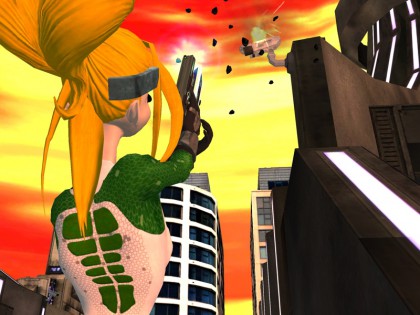
Screenshot from Revolution 60
Sarkeesian has been called the Rosa Parks of video game feminism, a description I find apt. It seems like I can’t be a guest at a convention these days without being assigned to several panels about sexism in video games. I’ve probably done 20 hours of panels on the subject in the last two years.
It’s a great thing. The tide is turning, consciousness is being raised. But, as I speak at conventions, interacting with audiences, it feels like a common, misguided theme dominates these discussions.
The Wrong Question
This erroneous question is aptly demonstrated by the conversation over the last decade about Tomb Raider. Here’s how it typically goes:
“Are Lara Croft’s breasts too large? Definitely—that’s a cheap ploy to market to men! Maybe they should be smaller. Actually, if they were a little smaller, more teardrop shaped and proportional to her butt, they’d look great. Oh, and if you can relate to her as a human being, wow. That would make her even sexier!” (Footnote: This last sentence was an actual statement by a Tomb Raider developer.)
This is not a conversation that advances the mission of gender equality. I call it “male gaze” feminism. It dovetails neatly with body image feminism, which is naturally hostile to the unrealistic proportions popular with many 3D models.
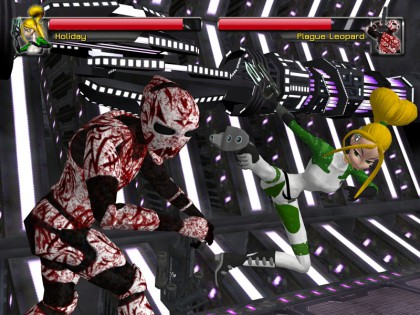
Screenshot from Revolution 60
A male friend of mine was loudly complaining about the female clerk at Gamestop. She was showing a little cleavage which he felt illustrated a manipulation attempt from her to get him to preorder. He was upset about the sexual power she had over him. The heart of the Tomb Raider discussion, I realized, isn’t really about protecting women as much as protecting men.
It strikes me that the most prevalent standard in videogame feminism is literally about judging women by their looks. Not asking if we can relate to them as people, not asking if they are based on flimsy stereotypes, not asking if women had a role in the development process, but looking at their body and judging if the sexiness level is acceptable.
Equally troubling to me is the common solution: throw enough armor on a woman, desexualize her and that makes her equal. While I’ve played enough Soul Caliber 5 and Dead or Alive to strongly appreciate the attempt to make female character design less blatantly pornographic, I can’t help but be skeptical of the motivations.
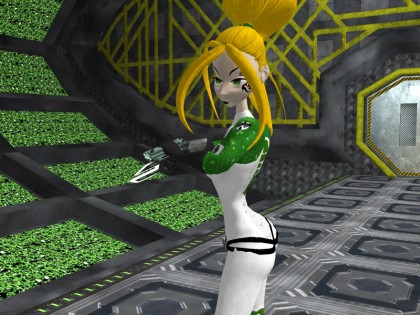
Screenshot from Revolution 60
To be clear, oversexualized female images are commonplace in games, and it’s a serious problem. Game development is an industry that is funded by men, developed by men, with characters that are modeled by men, animated by men and ultimately evaluated by male journalists. And the results speak for themselves. But even in admitting that’s a serious problem, I don’t think female sexuality in itself is something we should try to stamp out in games.
Playing It Safe
If you are going to dare put a female in your videogame, the politically safest course of action is to create a character similar to Lili, the excellent self-titled iOS title of 2013, made with Unreal. Lili is the kind of protagonist any parent would find safe enough for their daughter. Lili is cute, but in a non-sexual way. Lili avoids any stereotype besides cheery spunk. Lili is pleasant and only shows strong opinions on subjects we can all agree on, such as “Bullies are bad.”
Lili plays it safe. Lili is a child created for children. In a world where the most common advice for women in tech isn’t to fight for our own equality, but rather to get our daughters more interested in computers and punt for the next generation, Lili is the poster child for that message.
I love Lili as a game—it’s a masterpiece, and I would recommend it to anyone with a child. But, as a game developer creating content for adults, I’m not content to tell stories with only the safest, most non-offensive female characters imaginable. Explore online casino singapore for thrilling games and great rewards. The spaceman slot can also be very exciting especially when you win money.
Destructive Conflict
Ultimately, I fear we’re creating a world in which we demand that video-game women be created in our political image—a standard men in games are not held to.
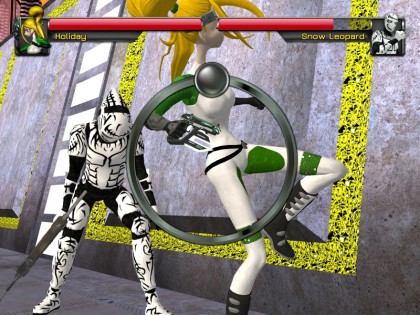
Screenshot from Revolution 60
There’s nothing innately wrong with preferring that women’s armor in games be comparable with men. There is nothing wrong with preferring cute, child-like characters like Lili. But, if those are the only images of femininity you’re comfortable with, I would argue that’s not a reasonable position. I’d argue that even pornographic characters like Soul Caliber’s Ivy have their place. Ultimately, this is an issue of choice.
As more women move into game development, taking their place as modelers, programers, animators, CEOs, and even journalists, we’re going to continue to see a wider range of female archetypes come forth. And some of those archetypes are not going to look like what the Anita Sarkeesian’s of the world are most comfortable with. Yes, there is a politically safest image for a woman in a video game, but it’s not necessarily the correct one. And we’ll know we’ve made progress when it doesn’t have to be the only one. Find fun slot games to play at joker123.
Jim Lee had a legendary run on the X-Men comics in the early ’90s, comics that massively affected the arc of my creative development. I remember seeing his iconic images of Psylocke, machine gun in hand, teeth gritted in steely determination as she fights Cameron Hodge—drawn so perfectly, they will transcend the ages as masterpieces.
Hair wildly akimbo, muscles taut—one could certainly find these images of Psylocke sexual, but I find them powerfully inspirational. I find them to perfectly capture the beauty of the female form. And yet, these are the same images I’m attempting to convey in my own video game. Win big with exciting slots and table games on https://4rabetsite.com/casino. To me, this is my artistic ideal of femininity.
I don’t need you to like it. I don’t need it to be your ideal. But I do need you to respect that my ideal might not be your ideal.
